Authors:
ABSTRACT
Aim
Bad habits result in altered functions which with time can cause anomalies of the orofacial morphology. To
solve these problems, orthodontic treatment can be supported by myofunctional therapy in order to recover the normal
functionality of the oral muscles. The aim of this study is to assess the need to treat patients with neuromuscular disorders,
from both the occlusion and the muscles condition approach in order to obtain the balance needed for the stability of
treatment.
Methods
A sample of 23 patients with atypical swallowing was included in this study, some of
them presented thumb sucking and oral breathing. After case history collection, in order to make a correct orthodontic and
functional diagnosis, correction of anomalies was carried out since they could compromise the success of the therapy
(maxillary contraction, oral breathing, and short lingual fraenum). Then a different therapeutic approach was applied on the
basis of the specific dental features.
Results
Both from the diagnostic and therapeutic point of view, important results were
achieved especially through muscle analysis with dynamometer and surface electromyography.
Conclusion
Orthodontic
therapy, in the presence of bad habits, is not enough to solve orthodontic issues, it must be combined with a myofunctional
treatment. The success of the therapy is granted only when patients and their family comply with the treatment and all
factors which can prevent success of the therapy are removed.
PLUMX METRICS
Publication date:
Keywords:
Issue:
Vol.13 – n.4/2012
Page:
Publisher:
Cite:
Harvard: S. Saccomanno, G. Antonini, L. D'Alatri, M. D'Angelantonio, A. Fiorita, R. Deli (2012) "Causal relationship between malocclusion and oral muscles dysfunction: a model of approach", European Journal of Paediatric Dentistry, 13(4), pp321-323. doi:
Copyright (c) 2021 Ariesdue

This work is licensed under a Creative Commons Attribution-NonCommercial 4.0 International License.
